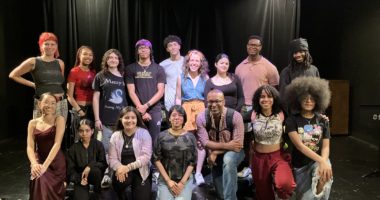I’ve been hearing, both in the news and in my own life, about the exhaustion and isolation for teachers and students in synchronous classes and the need for SEL. In speaking to educators in my own family, including my father teaching middle school across the country with his district committed to being remote through the Spring semester, he’d observed a push from administration to academically pace this semester to previous years.
But, let’s back it up. What even exactly is “SEL?”
SEL refers to Social Emotional Learning and the Collaborative for Academic, Social, and Emotional Learning (CASEL) defines SEL as “how children and adults learn to understand and manage emotions, set goals, show empathy for others, establish positive relationships, and make responsible decisions.


I was lucky enough to learn more about SEL by participating in an elective offered through TAP’s program, led by Katie Rainey called Social-Emotional Learning Through Arts in Times of Crisis. I had been been ruminating on why SEL is so important right now with the shift to remote learning since March within NYC’s public school system. I know NYC’s closing and sudden partial re-opening of schools and return of hybrid classes has been a whirlwind for parents, students, and staff alike. I was struck that earlier this week when Eliza Shapiro of the New York Times shared that, “the fact that so many students of color have chosen remote over in-person learning is raising alarms that existing disparities in the nation’s largest school system will widen since remote learning has been far less effective, parents, educators and officials said in dozens of interviews.” She offers that more than ever “the city must quickly bolster online instruction — or risk having its neediest children fall irrevocably behind.”


I’d argue that New York needs to bolster its online education, not just with more testing or assignments, but using SEL as a tool to take on some of the new challenges of education in this moment. Test scores are not as vital right now to students and their families as keeping that joy of learning alive and making sure students are engaged in their own education. Many educators across the country are noticing similar challenges for students everywhere.
The National Education Association released an article recently sharing about the real exhaustion students are experiencing in synchronous remote education, commonly known as Zoom fatigue. “The reason,” says Dr. Brenda Wiederhold, a clinical psychologist, “lies in the fact that communication over these programs isn’t, in fact, real-time. For educators and students specifically, so-called “synchronous” learning over a computer isn’t really all that synchronous.” She goes on to explain that “our brains are used to picking up body language and other cues, not to mention increases of dopamine, that are experienced during face-to-face communication.” This creates an added layer of stress for students. “On a video call, something is off, and our subconscious brain is reacting to that. Communication isn’t in real-time, even though we may think it is,” Wiederhold asserts.


Students who are lucky enough to taught through synchronous classes with SEL in mind, are allowed a chance to use the arts to nourish their emotions and relationships in a safe way. With Katie, we had a chance to delve into the Five Competencies of SEL: Self-awareness, self-management, social awareness, relationship skills, and responsible decision making and act as students to engage with multidisciplinary activities that would support students learning. In my own work, I’m not entirely sure how to best share resources about Social Emotional Learning with other educators, but know that the Teaching Artist Project has it’s communities back by putting the word out there.





